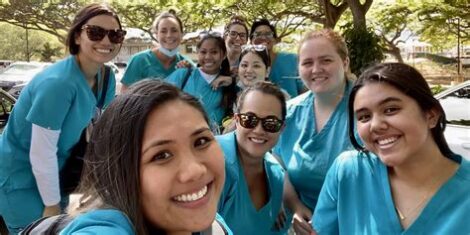County of Maui Water Supply Department is entering a new era
OUR COUNTY
Managing community water systems is a long-term business. For one thing, improvements take time. In addition, a long-term strategy is essential to meet the needs of not only today, but for future generations. My intention as the new leader of the Maui
County Department of Water Supply is to not only make the improvements needed now, but also to build the foundation for the future by putting in place the components that will benefit Maui for generations to come.
This foundation includes the capacity to effectively manage the water system. It consists of operational staff with the proper training and equipment, planning and engineering staff to support operations and prepare for the future, and the fiscal and administrative staff to provide organizational support.
Planning and engineering are especially problematic. Of the 16 engineering positions in the department, only four are filled by registered, professional engineers. Given the difficulty in hiring planners and engineers, we are securing consultants to assist as a stop-gap until county staff can be secured.
This foundation also includes a comprehensive understanding of the water system. To this end, we have initiated an effort to assess the condition of the water system assets and build a computer model to fully understand how it operates both “as is” and with improvements and additions. Interestingly, the Maui water system is 12 separate systems, which, in sum, have more components (pipe segments, wells, pumps, valves, etc.) than the Los Angeles water system, which serves 25 times more people.
The complexity of Maui’s system is due mostly to its piecemeal development (often not in alignment with modern engineering standards) and the challenging topography. Understanding the system is critical to efficiently focus maintenance, to implement the most impactful capital improvements and to discern the ramifications of new sources and new users.
In addition, this foundation includes a diversified portfolio of water sources. Maui’s sources include wells (but more are needed), and surface-water ditches (which are not being well-maintained and are not controlled by the county). Less water will be available in the ditches due to climate change and new requirements to restore streamflow. We need to secure our existing sources and develop additional ones.
One truism about water is that the next source of water is more expensive than the last. This is especially true on Maui where we have been living off a false water economy; i.e., very inexpensive water from the legacy agricultural ditch systems. The infrastructure, production costs and delivery costs of future sources will be more expensive — probably by a lot.
Finally, this foundation must include the financial wherewithal to both maintain the existing system and prepare for the future. In a healthy water utility, sustainable revenue (not including one-time revenues) should be sufficient to cover both operational costs and capital improvements.
Water rates and fees are the only ongoing revenues for the department. Given that rates had been unchanged since 2019, and that costs had increased significantly over time, several rate increases were needed. The fiscal year 2024 rate increase approved by the council and signed into law by Mayor Richard Bissen provides revenues sufficient to cover operations. However, capital improvements are still funded by one-time revenues (unspent monies from past years and grants). Future year rate increases will be needed to provide sustainable revenues to cover operations and capital improvements.
The fiscal 2024 rate increase was designed with specific objectives. For single-family homes with individual meters, water rates for “lifeline” needs were only increased by about 4 percent, whereas the rates for high water use was increased by up to 24 percent. This structure provides water for basic needs at a low rate while encouraging conservation. Agricultural rates were kept low to encourage food security, and a new higher rate was implemented for hotels and resorts. Rates for other businesses and multifamily units were increased by 8 percent.
Water planning must be done in concert with the state and community interests. With operational and technical resources in place, along with a solid understanding of the system and proper funding, we will have the ability to work with the community. Together, we can manage the system efficiently and strive to establish the foundation for generations to come.
* John Stufflebean is director of the County of Maui Department of Water Supply. He has over 40 years of experience working in local government, including 24 years as a department director responsible for the operational and administrative aspects of potable and recycled water systems, wastewater and stormwater management, solid waste management and watershed protection. “Our County,” a column from Maui County Mayor Richard Bissen and his administration, discusses county issues and activities of county government. It alternates on Saturdays with “Council’s 3 Minutes.




